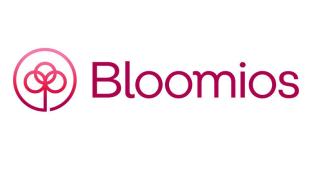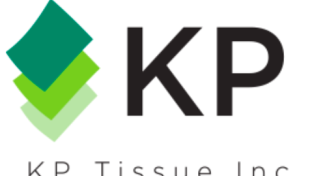Make paper products indispensable

Paper products help make cleaning up lifes daily messes a little easier. But consumers are sometimes willing to sacrifice convenience when trimming their budgets – at least when it comes to paper towels and napkins.
Store brand paper products often are a cost-effective and reliable alternative to name brand products, but retailers know they have to focus on more than just price to create consumer loyalty and grow the category. High-quality packaging – along with creative merchandising and promotion – is critical to crafting a successful private label paper products program.
Higher ends a hit
According to a recent Mintel report titled "Household Paper Products – US," slow and steady gains are expected for the overall paper products category through 2017. Future growth will be pinned to the notion that higher-quality, more differentiated products can be marketed as a superior overall value for cost-conscious consumers.
"At the moment, we are measuring a greater need from consumers and retailers to find the best quality/price value when shopping for paper products," says Suzanne Blanchet, president and CEO of Cascades Tissue Group, Kingsey Falls, Quebec. "More than ever before, they are searching for high-end products that combine increased softness and performance."
Do
consider offering through-air-dried paper products, which are thicker, softer and more absorbent than their traditional counterparts.
Dont
wrap your paper products in generic-looking packaging.
And nowhere is this trend more evident than in the toilet tissue segment – the largest of all of the segments that comprise the paper products category. In fact, private label toilet tissue continues to grow, with gains not only in dollar sales, but also in unit sales, which jumped almost 6 percent during the 52 weeks ending Oct. 6, 2013 (see the table, p. 68).
"Many of the trends and innovation are centered around bath tissue in the ultra-premium segment," says Bruce Woodlief, director of marketing â?? consumer products for Clearwater Paper Corp., Spokane, Wash. "This segment increasingly is made up of branded and private label offerings made from through-air-dried tissue."
Products that are through-air-dried (TAD) generally provide better absorbency, thickness and softness than traditional tissue offerings, he explains, adding that both national brands and retailers rolled out an increasing number of these products over the past 12 months.
Although the number of TAD paper products might be increasing, name brands are getting stingy in other areas.
"In the past year, weve seen a lot of size changes and down-sheeting," says Daniel David, executive vice president of Medford, N.Y.-based Global Tissue Group, "which basically means that national brands have been looking at pricing. And with costs going up, theyve lowered some sheet counts as well as changed sheets sizes in order to be more cost-effective on the shelf."
Free for all
When it comes to promoting store brand paper products, retailers should make sure they are well-stocked with clever merchandising and promotion strategies. Given the high frequency of most paper product purchases, opportunities to build customer loyalty can be found year-round.
The increasing amount of consumer data available through loyalty cards and social media can be used by retailers to build consumer loyalty and relationships, Woodlief suggests.
"With the growth in popularity of retailer loyalty cards among customers," he says, "there is a huge opportunity for tailoring targeted programs that promote store brand trial and repeat purchase."
David agrees.
"For example, when buying a certain amount of store brand paper product," he explains, "the customer would get something free; or when buying a few different types of the private label bath tissue, the customer would get the private label paper towels free."
Another example David provides involves customers receiving a four-pack of bathroom tissue for free when their bill hits a certain dollar amount.
And Blanchet feels that product samples are an especially invaluable tool to promote trial.
"Samples distribution is still the best way to get new customers to try a paper product," she explains. "As the economy recovers, we see consumers choosing higher-quality levels, [and] we are working on getting the ultra/premium paper products into the hands of customers that are currently buying the value/economy products and are financially able to upgrade in quality."
Mistake management
Turning to packaging, retailers – if theyre not careful – could make their biggest mistake here. And that mistake can be costly.
Blanchet feels that packaging needs to be "brand-orientated" for retailers to be successful.
"Too many of the package designs we see on the shelves are very generic," she says. "The store brand will be in small type and in very large type will be, for example, bath tissue."
This approach is in direct contrast to the national brands, where the brand name and image are most prominent on the package, she adds.
In addition, a generic look just is not attractive to the consumer, David says.
"If its a generic or kind of cheap look, the consumer will think the product is cheap in quality," he explains. "Today, many of the packaging and art design companies are involved with the larger retailers to make sure that they attract that customer and make their product look like high quality at a competitive price."
Global Tissues new creative packaging elements – available to retail customers – include hologram images and glow-in-the-dark boxes for facial tissue.
However, while retailers could take a page from national brands when it comes to packaging, they should not strive to emulate them across the board.
"Sometimes, retailers like to follow the national brands [in regard] to counts, qualities in packaging, and so on," David says. "But it really depends on the consumer and who the retailers final customer is."
With that information on hand, he explains, retailers should tailor their approach to perhaps being more price-point-specific rather than just being a "me too" to the national brands.
Managing a multi-branded, multi-tier category such as paper products is in and of itself a challenge – and rife with potential for mistakes, Woodlief says.
"Too much emphasis on branded promotions or over-proliferation of category SKUs can have a significant effect on the strength of the store brand," he explains. "Disciplined retailers develop a target category share for their store brand and manage that share via pricing, promotions, advertising, share of shelf, share of selection, etc."
Rolling forward
Looking ahead, the overall paper products segment shows no sign of slowing down. And store brands place within it will continue to evolve.
Do
consider sampling your own-brand paper products to get them into shoppers hands.
Dont
overlook the differentiating power of environmentally responsible paper products.
"Paper products over the next five years will continue to be a top-tier category for most retailers," Woodlief explains. "Marketing and innovation from leading consumer product group and corporate brand manufacturing companies will continue to bring growth to the category."
One way retailers could distinguish themselves is via environmentally responsible products.
"At Cascades, we believe that environmentally preferable products will eventually become a standard practice in the tissue products private label market," Blanchet says. "Innovation will allow more and more efficiency, and the impact of paper products manufacture will be less resource-intensive."
While the Forest Stewardship Councils (FSC) logo indicates that a product was made with quality fiber sourced from well-managed forests, Woodlief explains, few of the national brands are offering this certification.
And a recently announced partnership could potentially raise the certifications level of significance. In November 2013, a partnership between the FSC and the USDA Forest Service Forest Products Laboratory established a cooperative research program in which forensic wood science is employed to investigate supply chain integrity and verify product claims.
"This is a cutting-edge effort to further ensure FSC claims are accurate," says Kim Carstensen, executive director of FSC. "Customers expect the FSC logo to mean responsible forest management, so we are thrilled to work with the Forest Products Lab in continuously enhancing the integrity of our system."

